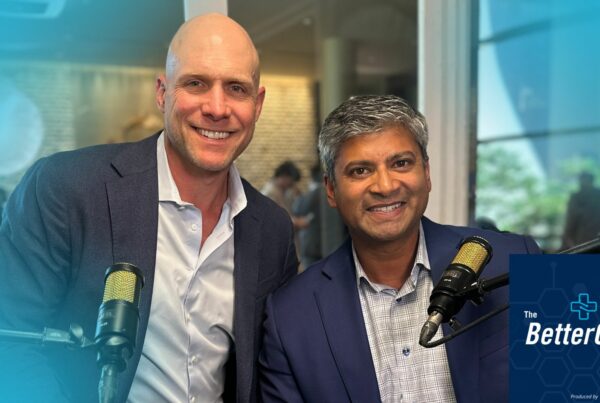Healthcare executives today are at the crossroads of managing rising costs, improving patient care, and navigating digital transformation.
In a recent episode of The Better Care Podcast digital health and economics expert, Adam Kaufman, currently the Interim Category Lead of Products at Baylor Scott & White Health, provided valuable insights into how these challenges overlap and how healthcare leaders can strategically address them.
This article highlights Kaufman’s perspectives and offers actionable strategies for executives striving to align their organizations with the current economics of healthcare.
Some quotes have been slightly edited for brevity.
The Economic Landscape of Healthcare
When analyzing healthcare spending, it’s essential for healthcare executives to understand where the bulk of funds are allocated. While public discourse often focuses on pharmaceutical companies and insurance plans, the reality is that the majority of healthcare dollars flow directly to providers.
“I think what surprises most people is that the vast majority of healthcare spending—about two-thirds—goes to providers. This is roughly split between hospitals, which include facilities, and physician practices, whether they’re affiliated with hospitals or run independently.” – Adam Kaufman
In comparison, health plans and government entities account for a smaller portion of the total spend, while pharmaceuticals, represent only about 10% of healthcare costs.
“One reason pharma often gets blamed or held accountable is that there are far fewer pharmaceutical companies, and they tend to be much more profitable than other sectors.
For example, there are about ten major pharma companies generating significant profits. In contrast, there are over 240 health systems across the country that each bring in over a billion dollars in revenue, so while pharma is highly concentrated, large health systems are more widespread.” – Adam Kaufman
This allocation of funds highlights the importance of focusing on provider efficiency to manage costs effectively. Rather than concentrating solely on health plans or pharmaceuticals, the industry should prioritize improving operational efficiencies within provider organizations. Labor costs, in particular, are a significant driver of expenses, making them a key area for strategic optimization.
Labor Costs and the Workforce Challenge
Managing labor costs is a growing challenge for healthcare organizations, particularly as they face workforce shortages. Physicians and nurses are essential to care delivery, yet many are undercompensated considering their education and debt.
As healthcare demand rises, executives must find ways to manage these increasing labor costs while ensuring quality care and addressing the projected shortages in critical roles.
One factor driving these rising labor costs is the fee-for-service model. Since providers are reimbursed based on the volume of services delivered, there is a direct correlation between service demand and the need for more staff to handle the workload.
This model can lead to inefficiencies, as organizations hire more personnel to meet service demands without necessarily improving care quality. The focus on quantity over value also adds strain to the workforce, further complicating labor management.
“The key point is that most healthcare is still provided on a fee-for-service basis. And if you look at it from the provider’s perspective, a significant portion of costs are related to labor.
The vast majority of what providers do involve people performing tasks, and while some are well compensated, many healthcare professionals, including physicians, are underpaid when you consider the years of schooling and debt they’ve accumulated compared to what they could earn in other fields.” – Adam Kaufman
This financial strain, coupled with a projected shortage of physicians and an equivalent gap in nursing over the next five years, intensifies the labor costs and workforce challenges that healthcare organizations face.
To address these issues, healthcare executives should leverage digital tools and automation to reduce the workload on healthcare staff without compromising care delivery. These digital solutions should enhance clinical workflows, helping to streamline tasks and support care teams, rather than replacing them.
By integrating digital tools that seamlessly connect with both in-person and virtual care, organizations can improve coordination, reduce burnout, and ultimately deliver more efficient patient care.
The Role of Digital Transformation in Care Delivery
Early digital health efforts often focused on standalone software and digital therapeutics, but the field has evolved toward blending virtual, remote, and in-person care for a more holistic approach.
To ensure the successful adoption of digital health technologies, health system leadership must carefully select and integrate the right solutions into clinical workflows. The shift from technology-centric models to patient-centered care enabled by digital tools—particularly in virtual care and remote monitoring—has transformed healthcare delivery.
“What I would advise health systems to do, even before deciding whether to buy or build a solution, is to focus on how to achieve a unified and integrated delivery of these tools. The goal is to ensure they fit seamlessly into patient care workflows or the provider’s back-office operations, depending on the model you’re considering.” – Adam Kaufman
Digital tools should enhance both patient care and provider efficiency, rather than becoming isolated technologies that don’t integrate well with clinical workflows.
To avoid common challenges such as underutilization and fragmented care, health systems should focus on selecting tools that can be easily implemented into existing processes and systems like electronic health records (EHRs). By prioritizing solutions that align with organizational goals and operational workflows, healthcare leaders can ensure that digital tools are fully leveraged, leading to more efficient, integrated care.
“What often hurts these point solutions commercially is the challenge of deployment and integration. Even when they are implemented, they often see suboptimal usage because users have to download another app or navigate through additional screens. That’s the key issue.” – Adam Kaufman
Kaufman went on to explain that at BSW Health, they’re focusing a lot of their internal innovation on the “front door”—how patients discover these solutions and how integrated they feel. Behind the scenes, it’s a combination of building tools themselves while partnering or assembling components from outside vendors/solutions.
“…but the most important factor is ensuring a seamless experience.”
Actionable Strategies for Healthcare Executives
Based on Kaufman’s insights, there are several practical steps that healthcare executives can take to navigate the complexities of today’s healthcare economics:
Focus on Provider Efficiency: Given that most healthcare dollars flow to providers, executives should prioritize operational efficiencies, particularly in labor costs. Consider adopting automation and digital tools to reduce administrative burdens and enhance productivity.
Invest in Workforce Solutions: Addressing the looming labor shortage requires a multi-faceted approach. Executives should explore digital solutions that complement clinical care and consider new staffing models that optimize both cost and care quality.
Ensure Digital Tools are Integrated: Digital health solutions should not exist in silos. Executives need to prioritize the integration of digital tools into clinical workflows, ensuring that they enhance the patient experience and improve care coordination.
Embrace Hybrid Care Models: The future of healthcare delivery lies in the seamless integration of virtual, remote, and in-person care. Healthcare leaders should invest in technologies that enable this hybrid model, ensuring that both patients and providers benefit from a more coordinated care experience.
For the full interview between Bo Bartholomew and Adam Kaufman, watch or listen to Episode 18 of The Better Care Podcast.









